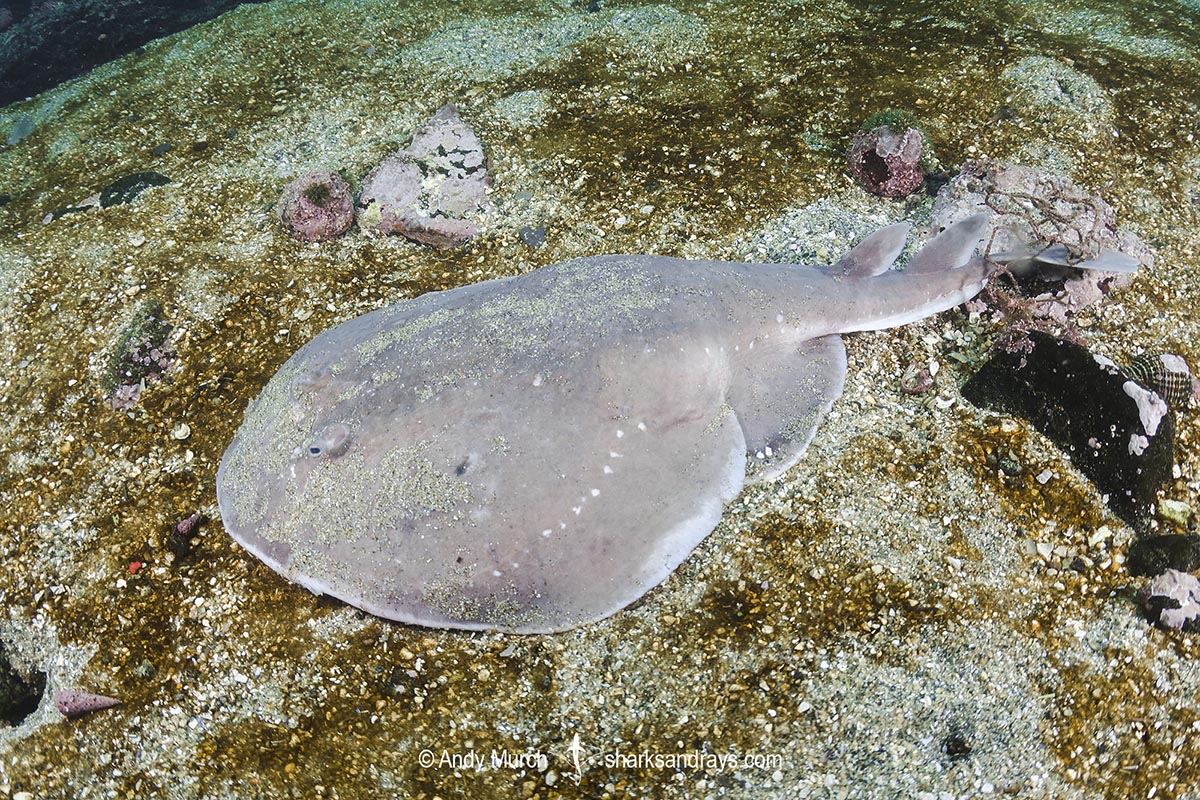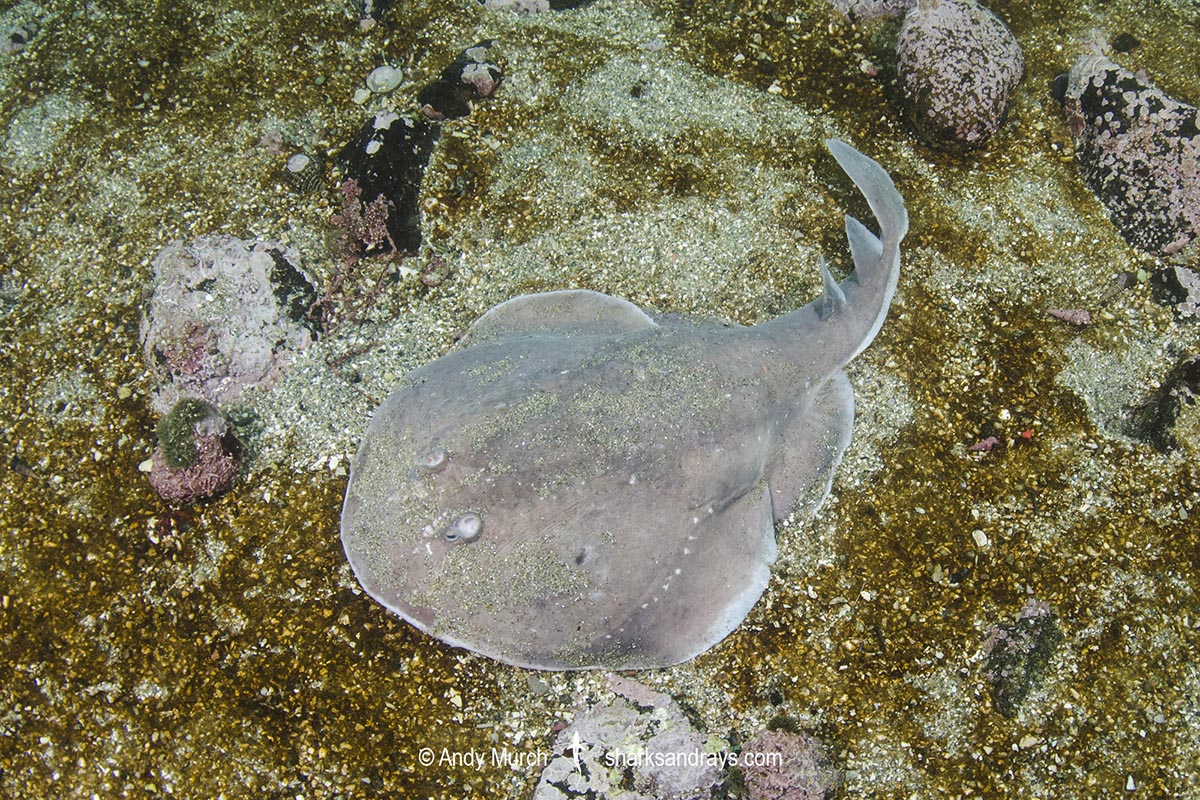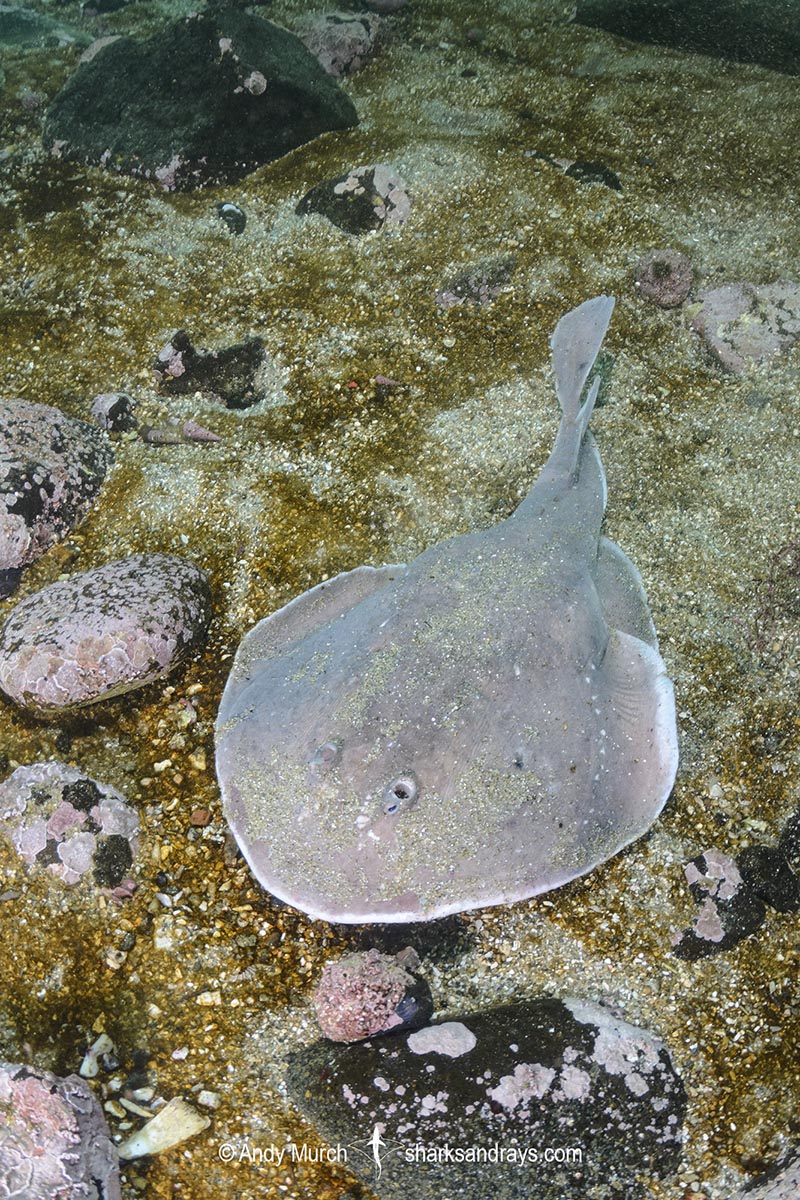Common names
Apron Ray, Apron Numbfish.
Binomial
Discopyge tschudii.
Synonyms
Torpedo chilensis.
Identification
A large electric ray with a teardrop-shaped body and a short, rounded snout. Anterior margins of disc weakly convex. Pectoral fin apices broadly rounded. Eyes weakly protruding, very small; smaller than spiracles. Spiracles oval-shaped and smooth edged; without papillae on posterior margin. Nasal curtain wider than long with a pronounced central lobe. Nostrils small and circular.
Pelvic fins broad and long with rounded apices. Tail moderately wide at base, with well developed lateral keels. Dorsal fins closely spaced, large, and angled backwards, with broadly to narrowly rounded apices and broadly convex posterior margins. First dorsal origin over pelvic fin posterior margin. Caudal fin large, dorsal margin mildly convex, posterior/ventral margin broadly rounded.
Colour
Dorsum light to dark brown, pinkish grey, or olive brown, occasionally with darker blotches. Lateral line pores conspicuously white. Disc margin, lateral keels, and posterior margins of dorsal and caudal fins may also be white. Ventrum white, occasionally with darker blotches around electric organs.
Size
Maximum length ~55cm. Size at birth 8-9cm.

Conservation Status
LEAST CONCERN
The Apron Numbfish is a bycatch component in trawl and gillnet fisheries, but is always discarded. Post release mortality is probably low.

Habitat
Temperate seas. Benthic on soft substrates, often around rocky reefs. From 10 to 181m.
Distribution
Southeast Pacific and southwest Atlantic. Found from Peru, southward around Cape Horn and northward to Rio Grande do Sul in Brazil.
Reproduction
Aplacental viviparous. Litter size 1-12, usually 4-5.
Diet
Feeds mostly on polychaete worms and amphipods.
Behavior
Segregates by sex.
Reaction to divers
Easy to approach. Usually remains completely motionless but may try to deliver a shock and then relocate when threatened.
Diving logistics
Aparently more common in Argentina but I have only seen this ray in Zapallar Bay (about 2 hours north of Santiago, Chile) but other divers report sightings along the central coast so it is obviously quite widespread and relatively easy to find in the Pacific.
Sightings are usually on sand or mixed rocks and sand so if you would like to see this ray, shore-diving in sandy bays close to Santiago would be an ideal place to start. Most bays are exposed to surge but the bay at Zapallar is protected from some of the swells. Park your vehicle on the public beach in the centre of the bay and swim to the left (south) before submerging. This is also a good spot to locate ‘Pinta roca’ aka. Redspotted catsharks.
What’s new
View our full list of updates
Similar species
Castello’s Apron Ray Distinguishable by deep concavities in anterior margins of pectoral fins.


